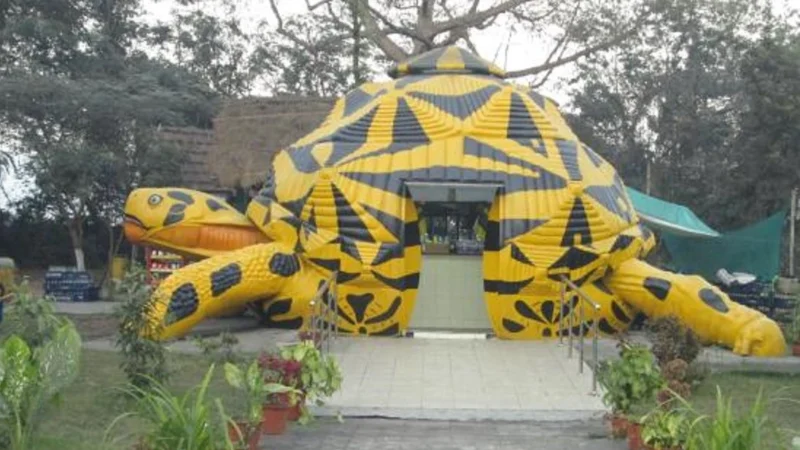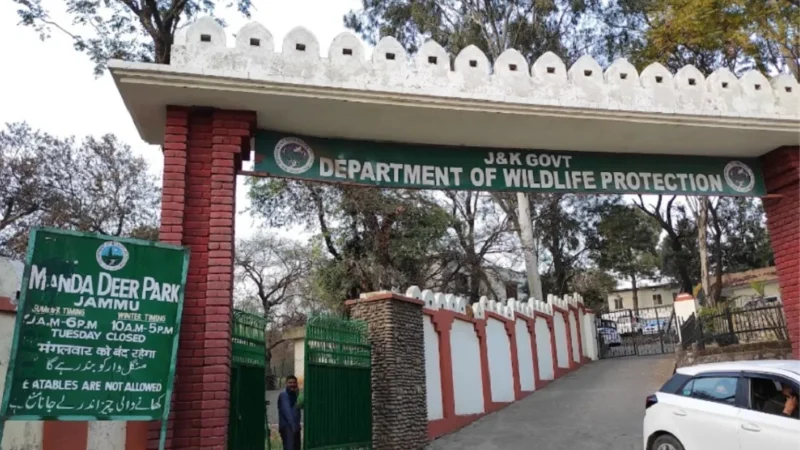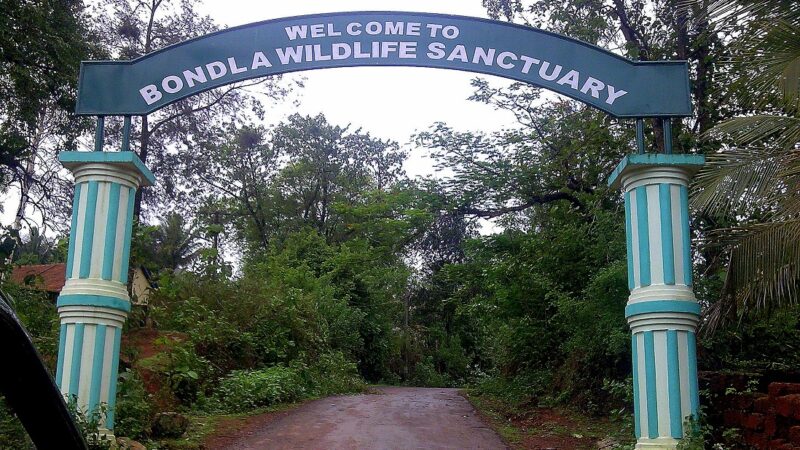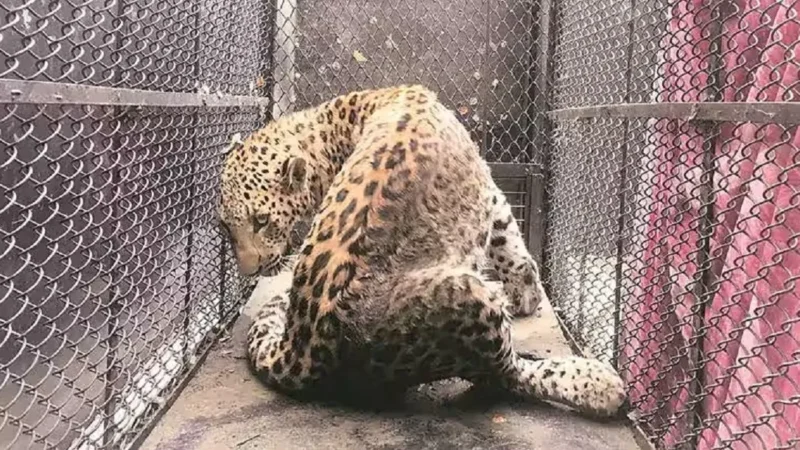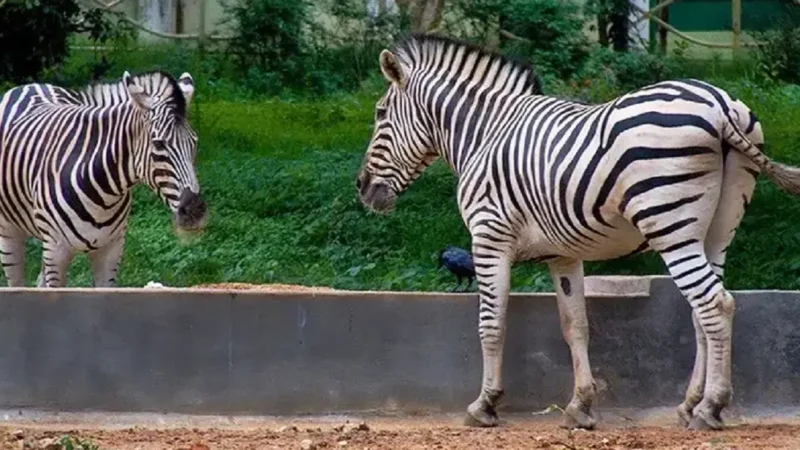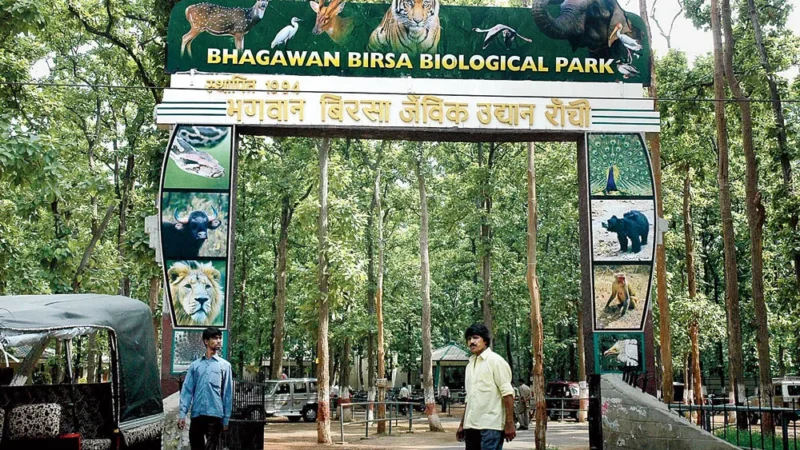Zoo in Udaipur – Sajjan Garh Biological Park | Ticket, Timing, Flora and Fauna

Table of Contents
ToggleUdaipur Zoo -
Welcome to Sajjan Garh Biological Park, a haven of biodiversity nestled in the heart of Udaipur, Rajasthan, India. This enchanting park near the majestic Sajjangarh Palace is a testament to nature’s beauty and the importance of wildlife conservation. Join us on a virtual safari as we explore the rich tapestry of flora and fauna thriving in this picturesque sanctuary. Discover the wonders of Sajjan Garh Biological Park, where every visit unfolds a story of coexistence and the magnificence of the animal kingdom.
History of the Sajjan Garh Biological Park
Sajjan Garh Biological Park was constructed in 2004-05 under the Rajasthan Forestry and Biodiversity Project, with financial assistance from the Japan International Cooperation Agency. The park was inaugurated on April 12, 2015 by Prakash Javadekar, then Minister of Environment, Forests and Climate Change.
The park was built to address the shortcomings of the existing Gulab Bagh Zoo, which needed to meet the norms prescribed by the Central Zoo Authority of India. Sajjan Garh Biological Park was designed to be a more modern and humane zoo, focusing on animal welfare and conservation.
The park is spread over an area of 36 hectares and is home to various animals, including tigers, leopards, bears, sloth bears, hyenas, wolves, crocodiles, snakes, and birds. The animals are housed in spacious enclosures that mimic their natural habitats.
The park also has a museum, which educates visitors about the wildlife of Rajasthan and the importance of conservation. Sajjan Garh Biological Park is a popular tourist destination vital in educating and sensitizing the public about wildlife and conservation.
Udaipur Zoo Location
Address: Fateh Sagar Rd, Main Gate, Malla Talai, Udaipur, Kodiyat, Rajasthan 313001, India.
Sajjan Garh Biological Park Ticket
The ticket price for Sajjan Garh Biological Park is as follows:
Category Ticket Price
Adults ₹50
Children (up to 12 years) ₹25
Senior citizens (above 65 years) ₹25
Disabled visitors ₹10
School students (with ID cards) ₹15
Sajjan Garh Biological Park Timing
The opening and closing hours of Sajjan Garh Biological Park vary depending on the season.
Winter (October to March)
- Opening hours: 9:00 AM
- Closing hours: 5:00 PM
Summer (April to September)
- Opening hours: 8:00 AM
- Closing hours: 4:00 PM
The park is closed on Tuesdays.
Layout of Sajjan Garh Biological Park
Sajjan Garh Biological Park is spread over an area of 36 hectares and is divided into different zones. The main entrance to the park leads to a large plaza, where there is a ticket counter and a map of the park.
From the plaza, visitors can walk along a main path that leads to the different animal enclosures. The enclosures are arranged in a circular pattern, with the tiger enclosure at the center.
Other animal enclosures in the park include:
- Leopard enclosure
- Bear enclosure
- Sloth bear enclosure
- Hyena enclosure
- Wolf enclosure
- Crocodile enclosure
- Snake enclosure
- Bird enclosure
The park also has a museum, which is located near the main entrance. The museum has exhibits on the wildlife of Rajasthan and the importance of conservation.
Animal Enclosures at Sajjan Garh Biological Park
The zoo animals require specially designed enclosures to make their lives in captivity as comfortable as possible. Modern enclosures provide better visibility to visitors without unduly disturbing their inmates. The enclosures of the zoo are open to the sky.
- Lion Enclosures
The lion enclosure, which currently has Asiatic Lions and hybrid lions, are bounded by dry moats on one side and chain link mesh fence on the remaining sides. The holding area in the enclosure has two units. Each unit comprises four retiring cells, one squeeze cage, two dens and a non-display area.
- Tiger Enclosures
A dry moat bounds it and chain link mesh fence on one side. The holding area has six retiring cells, one squeeze cage, two Kraals and two non-display areas. The outer part of the enclosure has moderately dense vegetation of grasses, bushes and trees.
- Panther Enclosure
The panther enclosure is bounded by a chain-like mesh fence with a perforated sheet fixed in slanting angle at the top of the vertical chainlink fence. It has two dens, water troughs, Kraal & non- display area.
- Bear Enclosure
We have two different enclosures for sloth bear & Himalayan Black bear. It is bounded by dry moat wall with water troughs.
- Sambar Enclosure
This open enclosure has a feeding platform and water troughs, wallow point and kraal facilities. It has a dry moat towards the visitor side and a chain link mesh fence on the rear. Trees are being raised in the enclosure to protect from extreme weather conditions.
- Blackbuck Enclosure
This is an open enclosure with feeding platform, water trough, temporary sheds and some trees to provide shelter from extreme weather conditions.
- Fox Enclosure
A dry moat bounds it and has two dens. Like the wolf enclosure, display area is well vegetated.
- Hyena Enclosure
A dry moat bounds it and has two dens. Like the wolf enclosure, this one is also thickly wooded.
- Wolf Enclosure
Bounded by a dry moat, the display area of the enclosure is under thick vegetation of local species.
- Reptile Enclosure
Crocodiles & Gharials are kept in separate enclosures. Each enclosure has two ponds, basking area and toughened glass.
Birds of the Sajjan Garh Biological Park
Sajjan Garh Biological Park is home to various birds, including resident and migratory species. Here is a list of some of the most common birds found in the park:
- Indian peafowl (Pavo cristatus)
- Grey hornbill (Ocyceros birostris)
- Malabar trogon (Harpactes fasciatus)
- Indian roller (Coracias benghalensis)
- Common kingfisher (Alcedo atthis)
- Black-headed ibis (Threskiornis melanocephalus)
- Cattle egret (Bubulcus ibis)
- Indian robin (Saxicoloides fulicatus)
- Asian paradise-flycatcher (Terpsiphone paradisi)
Reptiles of the Sajjan Garh Biological Park
Sajjan Garh Biological Park is home to various reptiles, including common and endangered species. Here is a list of some of the most notable reptiles of the park:
- Gharial (Gavialis gangeticus)
- Marsh crocodile (Crocodylus palustris)
- Star tortoise (Geochelone elegans)
- Indian rock python (Python molurus)
- Cobra (Naja naja)
- Krait (Bungarus caeruleus)
- Monitor lizard (Varanus bengalensis)
- Chameleon (Chamaeleo zeylanicus)
Flora of Sajjan Garh Biological Park
Sajjan Garh Biological Park is home to various plant species, including trees, shrubs, herbs, and grasses. The park’s flora is representative of the Aravalli Range, known for its diverse and unique plant life.
Here is a list of some of the most common and notable flora of Sajjan Garh Biological Park:
Trees:
- Dhak (Butea monosperma)
- Amla (Phyllanthus emblica
- Neem (Azadirachta indica)
- Peepal (Ficus religiosa)
- Banyan (Ficus benghalensis
- Mango (Mangifera indica)
- Indian blackberry (Syzygium cumini)
- Amaltas (Cassia fistula)
- Gulmohar (Delonix regia)
- Khejri (Prosopis cineraria)
- Ber (Ziziphus mauritiana
Shrubs:
- Carissa carandas
- Lantana camara
- Ziziphus xylopyrus
- Indigofera tinctoria
- Euphorbia neriifolia
Herbs:
- Adhatoda vasica
- Ocimum americanum
- Tridax procumbens
- Cynodon dactylon
- Achyranthes aspera
Grasses:
- Poaceae family
- Cyperaceae family
- Juncaceae family
Fun activities at Sajjan Garh Biological Park
Sajjan Garh Biological Park is great for fun and learning about wildlife. Here are some fun activities you can do at the park:
- Visit the animal enclosures: The park has various animals, including tigers, leopards, bears, sloth bears, hyenas, wolves, crocodiles, snakes, and birds. You can walk along the main path and visit the animal enclosures at your own pace.
- Take a golf cart tour: If you don’t want to walk, you can take a golf cart tour of the park. The tour guide will take you to all the major animal enclosures and provide information about the animals.
- Visit the reptile house: The reptile house is home to various reptiles, including crocodiles, snakes, lizards, and turtles. You can see the reptiles up close and learn about their biology and ecology.
- Visit the museum: The museum has exhibits on the wildlife of Rajasthan and the importance of conservation. You can learn about the different animal species in Rajasthan, their threats, and what can be done to protect them.
- Have a picnic: There are several picnic areas in the park where you can enjoy a meal with your family and friends. Pack your food and drinks, as no restaurants are inside the park.
- Take a walk through the park: The park is well-maintained and has a variety of trails that you can walk along. You can enjoy the scenery and watch the birds and other animals.
- Take a nature photography walk: The park is a great place to take nature photos. You can capture photos of the animals, plants, and landscapes.
Best time to visit Sajjan Garh Biological Park
The best time to visit Sajjan Garh Biological Park is during the winter months (October to March), when the weather is pleasant and the animals are more active. The summer months (April to September) can be sweltering and humid, making exploring the park uncomfortable.
How to Reach Sajjan Garh Biological Park
Depending on your budget and preferences, there are several ways to reach Sajjan Garh Biological Park.
By car:
The park is located about 8 kilometers from Udaipur city center. You can take a taxi or auto-rickshaw from the city center. The drive to the park takes about 20-30 minutes.
By public transportation:
A bus service runs from Udaipur city center to Sajjan Garh Biological Park. The bus ride takes about 40 minutes.
By foot:
If you feel energetic, you can walk to the park from Udaipur city center. The walk takes about 1.5 hours.
Places to Visit near Sajjan Garh Biological Park
Here is a list of places to visit near Sajjan Garh Biological Park:
- Sajjan Garh Palace (Monsoon Palace): This palace is located on the hilltop above the biological park and offers stunning views of the city and the surrounding countryside.
- Lake Pichola: This beautiful lake is located in the heart of Udaipur and is surrounded by palaces, temples, and ghats. You can take a boat ride on the lake or visit one of the many attractions on its shores.
- City Palace: This sprawling palace complex is one of Udaipur’s most popular tourist attractions. It is home to many museums, gardens, and courtyards.
- Jagdish Temple: This Hindu temple is dedicated to Lord Vishnu and is one of the most important temples in Udaipur.
- Bagore Ki Haveli: This haveli is a traditional Rajasthani mansion now a museum. It has exhibits on Rajasthani culture, art, and history.
- Ahar Museum: This museum is home to a collection of artifacts from the Ahar civilization, which flourished around Udaipur from 3000 to 1000 BC.
- Fateh Sagar Lake: This artificial lake is located on the outskirts of Udaipur and is a popular spot for boating and picnics.
- Saheliyon ki Bari (Garden of the Maidens): This beautiful garden was built in the 18th century for the maids of honor of the queen of Mewar. It is known for its fountains, pavilions, and lotus pools.
- Shilpgram: This arts and crafts village is located on the outskirts of Udaipur and is a great place to shop for souvenirs.
- Lok Kala Mandal: This museum and cultural center is dedicated to the folk arts and crafts of Rajasthan.

